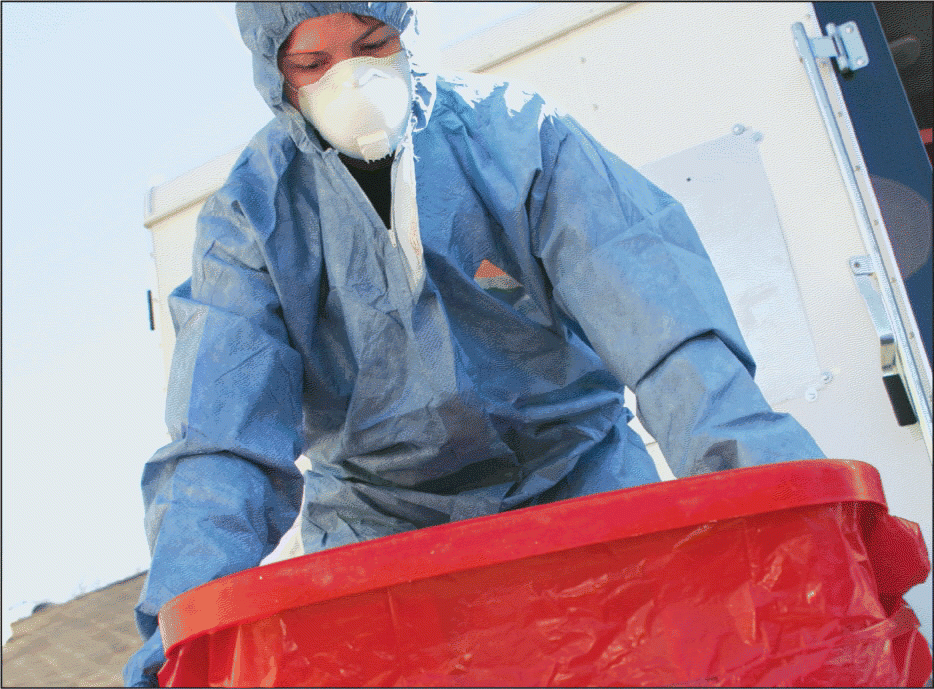PHOENIX-Doctors have a duty to encourage the hospitals and clinics they work in to go green because helping create a cleaner environment will improve the health of the very patients they are supposed to be caring for.
This was one of the underlying messages from Robin Cotton, MD, Director of Pediatric Otolaryngology-Head and Neck Surgery at Cincinnati Children’s Hospital, who gave the Joseph Ogura Lecture to the Triological Society at the Combined Otolarygnology Spring Meeting.
As physicians, we have historically considered ourselves as healers, rather than polluters, and have upheld the Latin maxim of primum non nocere-first, do no harm, he said. While doctors spend time focusing on the healing of patients, they have paid little attention to the fact they and their hospitals contribute to pollution, which in turn adversely affects people’s health.

Collectively, physicians have either been unaware of, or indifferent to, the incongruence between our guiding ethical principle of taking care not to harm patients or put them at risk, and the environmentally irresponsible behavior that pervades an industry in which we are key players, he said.
Waste and inefficiencies in hospitals not only adversely affect public health, but are also costly-yet there are greener, viable, economical alternatives available. As examples of waste, Dr. Cotton listed disposable medical equipment; inefficient lighting, heating, and cooling systems; and overconsumption of water. Then there are the toxic chemicals used in cleaning, disinfection, and pesticides. It’s time to figure out what alternatives are available, he asserted.
Some Sources of the Problem
Hospitals purchase items that are toxic and ultimately have a negative effect on the health of patients, workers, communities, and the ecosystem. Indeed, hospitals generate thousands of tons of toxic waste that affect the land, air, and water, Dr. Cotton said.
Medical waste incineration is a problem too. In 1998, the Environment Protection Agency (EPA) issued a report showing that medical waste incineration was a major source of toxic air emissions in the United States.
This report laid the groundwork for international consensus regarding the link between health care, environmental degradation, and health, he said. The problem with incineration emissions boils down to three major pollutants: dioxin, polyvinylchloride (PVC), and 2-diethylhexylphthalate (DEHP).
The EPA identified medical waste incinerators as the leading cause and source of dioxin. Dioxins are a group of complex toxic chemicals that are waste byproducts of industrial processes such as combustion, chemical manufacturing, and chlorine bleaching.
There is a direct association between the chlorine content of combustion material in bleached paper products, PVC, and dioxin formation. Upon incineration of such products, dioxin is released into the atmosphere. Rain, snow, and dust carry it to the surface of the earth. Deposition of dioxin emissions on fields and gardens brings it into the human food chain, he said. Furthermore, dioxins have a half-life of about 10 years, and bioaccumulate in human and animal tissue.
Breast milk, which has a high fat content, passes large amounts of dioxin to infants. The precise extent to which these toxins have contributed to the incidence of many types of cancer or other disorders is unknown, but it is indisputable that exposure represents risk to the ecosystem and public health, he said.
 Physicians have either been unaware of, or indifferent to, the incongruence between our guiding ethical principle of taking care not to harm patients or put them at risk, and the environmentally irresponsible behavior that pervades an industry in which we are key players.
Physicians have either been unaware of, or indifferent to, the incongruence between our guiding ethical principle of taking care not to harm patients or put them at risk, and the environmentally irresponsible behavior that pervades an industry in which we are key players.-Robin Cotton, MD
PVC is the plastic used widely used in medical devices such as total parenteral nutrition bags and nasogastric, hemodialysis, and endotracheal tubing. It is also used in examination gloves, respiratory masks, and plastic food wrap. The plastic is rigid, and DEHP is used to make it flexible. However, DEHP is a known reproductive and developmental toxin, and leaks out of medical devices.
Studies show that children have a heightened absorption of DEHP and are susceptible to DEHP toxicity. Neonatal intensive care units are known to receive the highest exposures in hospitals. Children with tracheotomy tubes are chronically exposed, he said.
Dr. Cotton noted that there are other plastics, such as polyethylene, polyurethane, and polypropylene, which are not manufactured with chlorine and do not require plasticizers such as DEHP. Products that lack PVC and DEPH are now available for most plastic health care products.
Although initial costs are currently higher, industry analysts expect that the alternatives will become increasingly cost-competitive as demand increases, he said. Dr. Cotton noted that hospitals in Sweden have already switched to polyurethane tubing to replace PVC tubing at virtually no increase in cost.
Because of international efforts, dioxins generated by waste incineration have decreased, and stricter toxin emission regulations have been imposed in the United States. However, incineration generating these pollutants still continues in many places in this country.
For otolarygnologists (and other physicians), the challenge is to work toward a shift in medical culture, changing a collective medical mindset based on noninvolvement in such issues to a mindset based on a higher ethical standard. This involves educating our medical colleagues and working towards a purchasing shift that reflects a commitment to ‘do no wrong,’ he said.
Solutions Save Hospitals Money
US hospitals generate more than 7000 tons of waste per day, Dr. Cotton said. Some hospitals reportedly put 70% of all their waste into biohazardous waste treatment, yet according to the Centers for Disease Control and Prevention, only 2% to 3% of hospital waste needs to be disposed of as infectious waste.
Processing biohazard waste is costly, with hospitals paying up to 10 times as much to dispose of infectious waste as regular solid waste.
Waste reduction and segregation programs are thus not only environmentally sound, but also represent cost savings…. [In fact] the literature is replete with reports indicating significant cost savings with improved waste segregation and reduction programs, he said.
As an example, in 1990, Mount Sinai Medical Center in New York began an aggressive waste segregation and staff behavior modification program, which resulted in cutting millions of dollars from its annual waste disposal costs. In 1996, Beth Israel Medical Center implemented a rigorous program to minimize both volume and the toxicity of waste generated, and saved about $600,000 annually, he said.
The task for otolaryngologists is to become knowledgeable about the goods that are purchased, how they are packaged and used, and what is discarded. Doctors need to help find ways to eliminate, reduce, reuse, and recycle. Instituting a hospital waste order is an important first step. Physician leaders need to be agents of change, he said.
Energy use is part of the equation too, with a 2001 report from the EPA citing hospitals as being energy-inefficient.
Hospitals expend about twice as much total energy per square foot as traditional office spaces, spending close to $3 billion annually on electricity alone, he said. The EPA report points out that if hospitals improve energy efficiency by 30%, the annual electricity savings will be nearly $1 billion overall, and 11 million fewer tons of carbon dioxide will be emitted.
European hospitals use about half the energy as comparable US hospitals, demonstrating that it can be done. Cost-cutting alone can be a valid reason to make energy consumption more efficient, but it also does the environment a favor by reducing CO2 emissions.
Admittedly, mitigating climate change is an extremely complex issue requiring action on many levels, but it does fall to each individual to reduce his or her carbon footprint, Dr. Cotton said. Physicians have a responsibility to fully understand the link between energy consumption, climate change and public health, he said.
Admittedly, a barrier to going green in hospitals is getting the executive level to buy into it. Commitment from the top is needed before formal environmental policies and the concomitant change can occur.
Physicians must be instrumental in the development of an environmental mission statement and benchmarks. As educators, we must work toward filling in what we can of the mental education of our future physicians by developing an environmental awareness and instilling in them a sense of environmental responsibility. We must cohesively chart a course toward sustainable hospital practices, he said.
Getting involved is clearly the right thing to do, he said.
©2009 The Triological Society
Leave a Reply